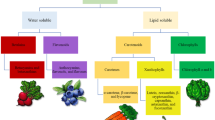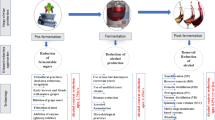Abstract
Ceratonia siliqua L. is quite popular for the sweetness of its fruit (“natural chocolate”) and the strong, persistent, characteristic odor that associates not only carob fruit, but also its traditional food products. This is due to the emission of an array of volatile organic compounds (VOCs). The released odor is a complex mixture, and therefore, needs to be separated prior detected, especially when its origin varies and is engaged. Therefore, Headspace–Solid-Phase Microextraction–Gas Chromatography–Mass Spectrometry (HS–SPME–GC–MS) analysis was performed in ground carob pods from three different European countries to decode their released aroma. The method was applied to Cypriot (Kountourka, Koumpota, Tilliria), Spanish (Negra, Rojal, Matalafera) and Italian (Saccarata, Racemosa, Gibiliana) cultivars, and the released volatile species were further processed with multivariate data analysis (MDA). The chromatographic separation highlighted 54 common VOCs in the grounded carob pods; the most abundant appeared to be propanoic acid 2-methyl (isobutyric acid), acetic acid, butanoic acid, hexanoic acid, and propanoic acid 2-methyl-methyl ester. The quantitative results for acetic acid, propanoic acid 2-methyl, butanoic acid, furfural and pentanoic acid revealed their emission in the low ppbv levels. The engage of MDA on the obtained results showed a clear differentiation of the carobs based on their geographical and botanical origin. The combination of HS–SPME–GC–MS and chemometrics contributes to the quality characterization of carobs and highlights their authenticity markers.



Similar content being viewed by others
References
Batlle I, Tous J (1997) Carob tree. Ceratonia siliqua L. Promoting the conservation and use of underutilized and neglected crops. Inst Plant Genet Crop Plant Res Gatersleben 17:92. https://doi.org/10.2307/4118457
Food and Agriculture Organization of the United Nations FAOSTAT. In: Retrieved from http//www.fao.org/faostat/en/#data/QC
Neville-Rolfe E (2007) Carob tree (Ceratonia siliqua, L.). Bull Misc Inf (Royal Gard Kew) 1898:184. https://doi.org/10.2307/4118457
Papaefstathiou E, Agapiou A, Giannopoulos S, Kokkinofta R (2018) Nutritional characterization of carobs and traditional carob products. Food Sci Nutr 6:2151–2161. https://doi.org/10.1002/fsn3.776
Christou C, Poulli E, Yiannopoulos S, Agapiou A (2019) GC–MS analysis of D-pinitol in carob: syrup and fruit (flesh and seed). J Chromatogr B 1116:60–64. https://doi.org/10.1016/j.jchromb.2019.04.008
Stavrou IJ, Christou A, Kapnissi-Christodoulou CP (2018) Polyphenols in carobs: a review on their composition, antioxidant capacity and cytotoxic effects, and health impact. Food Chem 269:355–374. https://doi.org/10.1016/j.foodchem.2018.06.152
Yousif AK, Alghzawi HM (2000) Processing and characterization of carob powder. Food Chem 69:283–287. https://doi.org/10.1016/S0308-8146(99)00265-4
Begou O, Deda O, Agapiou A et al (2019) Urine and fecal samples targeted metabolomics of carobs treated rats. J Chromatogr B 1114–1115:76–85. https://doi.org/10.1016/j.jchromb.2019.03.028
Farag MA, El-Kersh DM, Ehrlich A et al (2019) Variation in Ceratonia siliqua pod metabolome in context of its different geographical origin, ripening stage and roasting process. Food Chem 283:675–687. https://doi.org/10.1016/j.foodchem.2018.12.118
Goulas V, Stylos E, Chatziathanasiadou MV et al (2016) Functional components of carob fruit: linking the chemical and biological space. Int J Mol Sci 17:1875. https://doi.org/10.3390/ijms17111875
Perestrelo R, Barros AS, Rocha SM, Câmara JS (2011) Optimisation of solid-phase microextraction combined with gas chromatography-mass spectrometry based methodology to establish the global volatile signature in pulp and skin of Vitis vinifera L. grape varieties. Talanta 85:1483–1493. https://doi.org/10.1016/j.talanta.2011.06.025
Farag MA, El-Kersh DM (2017) Volatiles profiling in Ceratonia siliqua (Carob bean) from Egypt and in response to roasting as analyzed via solid-phase microextraction coupled to chemometrics. J Adv Res 8:379–385. https://doi.org/10.1016/j.jare.2017.05.002
Ducki S, Miralles-Garcia J, Zumbé A et al (2008) Evaluation of solid-phase micro-extraction coupled to gas chromatography-mass spectrometry for the headspace analysis of volatile compounds in cocoa products. Talanta 74:1166–1174. https://doi.org/10.1016/j.talanta.2007.08.034
Counet C, Ouwerx C, Rosoux D, Collin S (2004) Relationship between procyanidin and flavor contents of cocoa liquors from different origins. J Agric Food Chem 52:6243–6249. https://doi.org/10.1021/jf040105b
Akiyama M, Murakami K, Ohtani N et al (2003) Analysis of volatile compounds released during the grinding of roasted coffee beans using solid-phase microextraction. J Agric Food Chem 51:1961–1969. https://doi.org/10.1021/jf020724p
Akiyama M, Murakami K, Ikeda M et al (2007) Analysis of the headspace volatiles of freshly brewed arabica coffee using solid-phase microextraction. J Food Sci. https://doi.org/10.1111/j.1750-3841.2007.00447.x
Arcari SG, Caliari V, Sganzerla M, Godoy HT (2017) Volatile composition of Merlot red wine and its contribution to the aroma: optimization and validation of analytical method. Talanta 174:752–766. https://doi.org/10.1016/j.talanta.2017.06.074
Perestrelo R, Caldeira M, Câmara JS (2012) Solid phase microextraction as a reliable alternative to conventional extraction techniques to evaluate the pattern of hydrolytically released components in Vitis vinifera L. grapes. Talanta 95:1–11. https://doi.org/10.1016/j.talanta.2012.03.005
Splivallo R, Bossi S, Maffei M, Bonfante P (2007) Discrimination of truffle fruiting body versus mycelial aromas by stir bar sorptive extraction. Phytochemistry 68:2584–2598. https://doi.org/10.1016/j.phytochem.2007.03.030
Mateus ML, Lindinger C, Gumy JC, Liardon R (2007) Release kinetics of volatile organic compounds from roasted and ground coffee: online measurements by PTR-MS and mathematical modeling. J Agric Food Chem 55:10117–10128. https://doi.org/10.1021/jf071901v
Dryahina K, Smith D, Španěl P (2018) Quantification of volatile compounds released by roasted coffee by selected ion flow tube mass spectrometry. Rapid Commun Mass Spectrom 32:739–750. https://doi.org/10.1002/rcm.8095
Cantalejo MJ (2002) Effects of roasting temperature on the aroma components of carob (Ceratonia siliqua L.). J Agric Food Chem 45:1345–1350. https://doi.org/10.1021/jf960468e
Mcleod G, Forcen M (1992) Analysis of volatile components derived from the carob bean Ceratonia siliqua. Phytochemistry 31:3113–3119. https://doi.org/10.1016/0031-9422(92)83456-9
Custódio L, Serra H, Nogueira JMF et al (2006) Analysis of the volatiles emitted by whole flowers and isolated flower organs of the carob tree using HS-SPME-GC/MS. J Chem Ecol 32:929–942. https://doi.org/10.1007/s10886-006-9044-9
Krokou A, Stylianou M, Agapiou A (2019) Assessing the volatile profile of carob tree (Ceratonia siliqua L.). Environ Sci Pollut Res. https://doi.org/10.1007/s11356-019-04664-7
Zhu H, Zhu J, Wang L, Li Z (2016) Development of a SPME-GC-MS method for the determination of volatile compounds in Shanxi aged vinegar and its analytical characterization by aroma wheel. J Food Sci Technol 53:171–183. https://doi.org/10.1007/s13197-015-2035-5
Christou C, Agapiou A, Kokkinofta R (2018) Use of FTIR spectroscopy and chemometrics for the classification of carobs origin. J Adv Res 10:1–8. https://doi.org/10.1016/j.jare.2017.12.001
Kokkinofta RI, Theocharis CR (2005) Chemometric characterization of the cypriot spirit “Zivania”. J Agric Food Chem 53:5067–5073. https://doi.org/10.1021/jf0478814
Frías S, Trujillo JP, Peña E, Conde JE (2003) Classification and differentiation of bottled sweet wines of Canary Islands (Spain) by their metallic content. Eur Food Res Technol 213:145–149. https://doi.org/10.1007/s002170100344
Kokkinofta R, Fotakis C, Zervou M et al (2017) Isotopic and elemental authenticity markers: a case study on cypriot wines. Food Anal Methods 10:3902–3913. https://doi.org/10.1007/s12161-017-0959-2
Trygg J, Holmes E, Lundstedt T (2007) Chemometrics in metabonomics. J Proteome Res 6:469–479. https://doi.org/10.1021/pr060594q
Sgorbini B, Cagliero C, Liberto E et al (2019) Strategies for accurate quantitation of volatiles from foods and plant-origin materials: a challenging task. J Agric Food Chem 67:1619–1630. https://doi.org/10.1021/acs.jafc.8b06601
Medina S, Perestrelo R, Silva P et al (2019) Current trends and recent advances on food authenticity technologies and chemometric approaches. Trends Food Sci Technol 85:163–176. https://doi.org/10.1016/j.tifs.2019.01.017
Kokkinofta R, Yiannopoulos S, Stylianou MA, Agapiou A (2020) Use of chemometrics for correlating carobs nutritional compositional values with geographic origin. Metabolites 10:62. https://doi.org/10.3390/metabo10020062
Acknowledgements
This work was co-funded by the European Regional Development Fund and the Republic of Cyprus through the Research Promotion Foundation (Project: BlackGold INTEGRATED /0916/0019).
Author information
Authors and Affiliations
Corresponding authors
Ethics declarations
Conflict of interest
The authors declare that they have no known competing financial interests or personal relationships that could have appeared to influence the work reported in this paper.
Compliance with ethics requirements
This article does not contain any studies with human or animal studies.
Additional information
Publisher's Note
Springer Nature remains neutral with regard to jurisdictional claims in published maps and institutional affiliations.
Electronic supplementary material
Below is the link to the electronic supplementary material.
Rights and permissions
About this article
Cite this article
Krokou, A., Kokkinofta, R., Stylianou, M. et al. Decoding carob flavor aroma using HS–SPME–GC–MS and chemometrics. Eur Food Res Technol 246, 1419–1428 (2020). https://doi.org/10.1007/s00217-020-03500-4
Received:
Revised:
Accepted:
Published:
Issue Date:
DOI: https://doi.org/10.1007/s00217-020-03500-4




